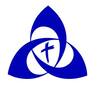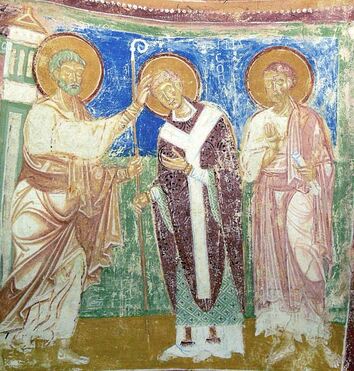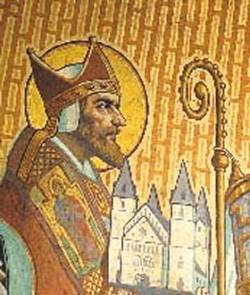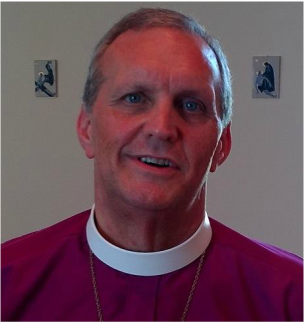
Over $3.5 Million of Medical Debt Forgiven across Pinellas County
Parishioners at St. Francis of Assisi Old Catholic Church are a tight-knit group - they look out for one another in times of need, come together as a community in times of mourning, and celebrate with one another in times of joy. Father Bob Swick, the spiritual leader of the parish, feels immeasurably lucky. His congregants are not only devout practitioners of their own faith but they embraced him as their shepherd when he joined them in 2019.
One reason that Father Bob experienced such a warm welcome to the Church is that his sermons are about more than creating a spiritual connection. He challenges his congregation to go above and beyond for each other and the community. Whether it’s volunteering for the less fortunate or beautifying the neighborhood, Father Bob is not only a man of the cloth, he is a man of action. His ongoing mantra is: "Do a daily random act of kindness."
It should have come as no surprise when one Sunday, following an eventful trip to Publix, Father Bob presented a challenge to his congregation. While leaving the grocery store, a Baptist Pastor caught his attention with two words: “medical debt.” The Pastor was raising money to buy back medical debt in Central Florida with a nonprofit led by two former debt collectors. By identifying the debt least likely to be paid, they were able to buy back debt from collection agencies for pennies on the dollar. For Father Bob, the question was simple. If they can do it, “why not us?”
The buy-in from his congregation was swift as they quickly began making progress toward their goal of $15,000. In the midst of the Covid-19 pandemic, this goal was in their rearview mirror as the amount collected reached $17,000. Members of the parish got in touch with RIP Medical Debt to prepare the transfer, and to ensure that 100% of the collected funds would go toward abolishing medical debt.
Ultimately, the $17,000 in donations were able to abolish $3,680,624.98 of medical debt - which at the time, represented the entirety of medical debt for 1,998 of our Pinellas County residents and 22 neighbors in Pasco County. Imagine their reaction, receiving a letter stating that all of their medical debt was wiped clean by St. Francis of Assisi, a small church in Dunedin, Florida.
********************************************************************
ABOUT RIP MEDICAL DEBT
RIP Medical Debt is a not-for-profit organization that is dedicated to eradicating medical debt burdening thousands of people each and every year. They accept individual and corporate donations to purchase medical debt from collection agencies for pennies on the dollar. Earlier in 2021, RIP Medical Debt negotiated their "first major debt purchase of $278 million of medical debt" directly from a hospital, offering a quicker way to release families from debt burdens that adversely affect their lives. To learn more about how to give the gift of medical debt relief, visit their website at https://ripmedicaldebt.org.
ABOUT ST. FRANCIS OF ASSISI OLD CATHOLIC CHURCH
St. Francis of Assisi Old Catholic Church is located at 545 Wood St., Dunedin, FL. Father Bob provides spiritual care, the seven sacraments, and weddings on the beach to all baptized Christians, regardless of divorce, second marriages, and same-sex relationships. This church welcomes diversity, inclusivity, and participation in the Mass at 11:00 am every Sunday. To learn more about this church, visit https://saintfrancisdunedin.org.
Parishioners at St. Francis of Assisi Old Catholic Church are a tight-knit group - they look out for one another in times of need, come together as a community in times of mourning, and celebrate with one another in times of joy. Father Bob Swick, the spiritual leader of the parish, feels immeasurably lucky. His congregants are not only devout practitioners of their own faith but they embraced him as their shepherd when he joined them in 2019.
One reason that Father Bob experienced such a warm welcome to the Church is that his sermons are about more than creating a spiritual connection. He challenges his congregation to go above and beyond for each other and the community. Whether it’s volunteering for the less fortunate or beautifying the neighborhood, Father Bob is not only a man of the cloth, he is a man of action. His ongoing mantra is: "Do a daily random act of kindness."
It should have come as no surprise when one Sunday, following an eventful trip to Publix, Father Bob presented a challenge to his congregation. While leaving the grocery store, a Baptist Pastor caught his attention with two words: “medical debt.” The Pastor was raising money to buy back medical debt in Central Florida with a nonprofit led by two former debt collectors. By identifying the debt least likely to be paid, they were able to buy back debt from collection agencies for pennies on the dollar. For Father Bob, the question was simple. If they can do it, “why not us?”
The buy-in from his congregation was swift as they quickly began making progress toward their goal of $15,000. In the midst of the Covid-19 pandemic, this goal was in their rearview mirror as the amount collected reached $17,000. Members of the parish got in touch with RIP Medical Debt to prepare the transfer, and to ensure that 100% of the collected funds would go toward abolishing medical debt.
Ultimately, the $17,000 in donations were able to abolish $3,680,624.98 of medical debt - which at the time, represented the entirety of medical debt for 1,998 of our Pinellas County residents and 22 neighbors in Pasco County. Imagine their reaction, receiving a letter stating that all of their medical debt was wiped clean by St. Francis of Assisi, a small church in Dunedin, Florida.
********************************************************************
ABOUT RIP MEDICAL DEBT
RIP Medical Debt is a not-for-profit organization that is dedicated to eradicating medical debt burdening thousands of people each and every year. They accept individual and corporate donations to purchase medical debt from collection agencies for pennies on the dollar. Earlier in 2021, RIP Medical Debt negotiated their "first major debt purchase of $278 million of medical debt" directly from a hospital, offering a quicker way to release families from debt burdens that adversely affect their lives. To learn more about how to give the gift of medical debt relief, visit their website at https://ripmedicaldebt.org.
ABOUT ST. FRANCIS OF ASSISI OLD CATHOLIC CHURCH
St. Francis of Assisi Old Catholic Church is located at 545 Wood St., Dunedin, FL. Father Bob provides spiritual care, the seven sacraments, and weddings on the beach to all baptized Christians, regardless of divorce, second marriages, and same-sex relationships. This church welcomes diversity, inclusivity, and participation in the Mass at 11:00 am every Sunday. To learn more about this church, visit https://saintfrancisdunedin.org.




 RSS Feed
RSS Feed